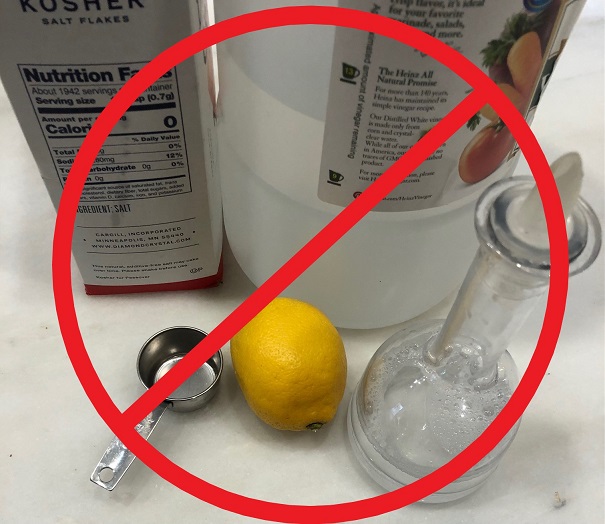
By Stephanie Smith, PHARM Deputy Director, Vermont Agency of Agriculture, Food and Markets
Any substance used to prevent, destroy, repel, or mitigate insects, weeds, fungi, rodents, or other unwanted pests is considered a pesticide, including when you mix up a substance in your kitchen to control pests. Making your own pesticides (including herbicides) may put your family, pets, and the environment at greater risk due to the unknowns associated with the substance you’ve concocted. You may be mistaken if you think this approach to controlling pests is a safe alternative and will reduce the risk of exposure to a toxic substance or even manage the target pest. The Vermont Agency of Agriculture, Food and Markets (VAAFM), registers all pesticides available for use in Vermont.
Using a substance not registered with the VAAFM will result in no knowledge of
- Whether the substance is safe to use near streams or lakes
- Whether you should wear gloves when applying the substance, or other gear to protect yourself
- How much should you use to be effective against the target pest, or whether it will have unintentional consequences for other organisms in the area where you applied the substance
- Whether it will be safe to eat your garden vegetables after applying this substance
- Whether it will kill your plants
The United States Environmental Protection Agency (EPA) plays a part in pesticide regulation under Federal Insecticide, Rodenticide, Fungicide Act (FIFRA). EPA conducts evaluations on the safety, efficacy, and the appropriate conditions for and uses of pesticides as part of its registration process. This information regarding how to safely use a product is outlined on the label. In addition to the rigorous vetting process established by FIFRA, there are also pesticides products that could be exempted from regulation under FIFRA. These products are known as minimum risk products.
Minimum Risk Products
These pesticide products may contain ingredients that could be found in a home like citric acid, cinnamon, peppermint, or garlic. A “minimum risk” pesticide must meet explicit FIFRA conditions; only certain active and inert ingredients may be used in the product’s formulation, specific label information, and which active ingredients are suitable for use on food or feed crops and food contact surfaces. Minimum risk pesticides must also be registered in Vermont, because of their potential for harm to people and the environment. Individuals looking for alternatives to conventional pesticides can search for products registered in Vermont.
When managing pests, it’s best to use a variety of approaches including preventative practices to dissuade pests from establishing in and around the home. This practice is an integrated approach to pest management (IPM). If you have question about what steps you can take before using a chemical control you can Ask a UVM Extension Master Gardener. When IPM indicates the need for a chemical control method, use an EPA approved or minimum risk pesticide register for use in Vermont. The product is formulated appropriately for the pest and site, and the label will contain the information necessary to reduce exposure to the public, pets and the environment, and directions on how to apply and dispose of it safely.
Additional Resources
- Reducing pesticide waste, Management of Household Pesticides | Agency of Agriculture Food and Markets (vermont.gov)
- Ask an Extension Master Gardener, https://www.uvm.edu/extension/mastergardener/helpline
- Commercial grower questions, https://www.uvm.edu/extension/pdc
- Home Remedies, http://npic.orst.edu/pest/home-remedies.html
- Low risk pesticides, http://npic.orst.edu/ingred/lowrisk.html
